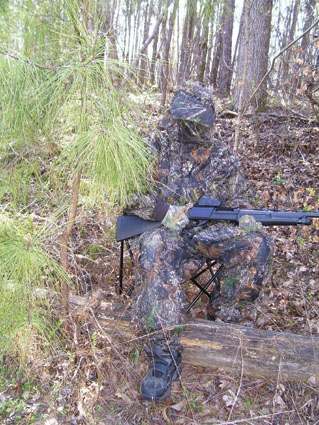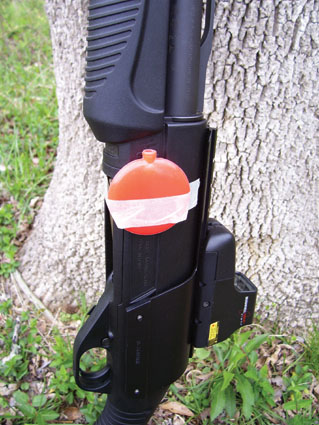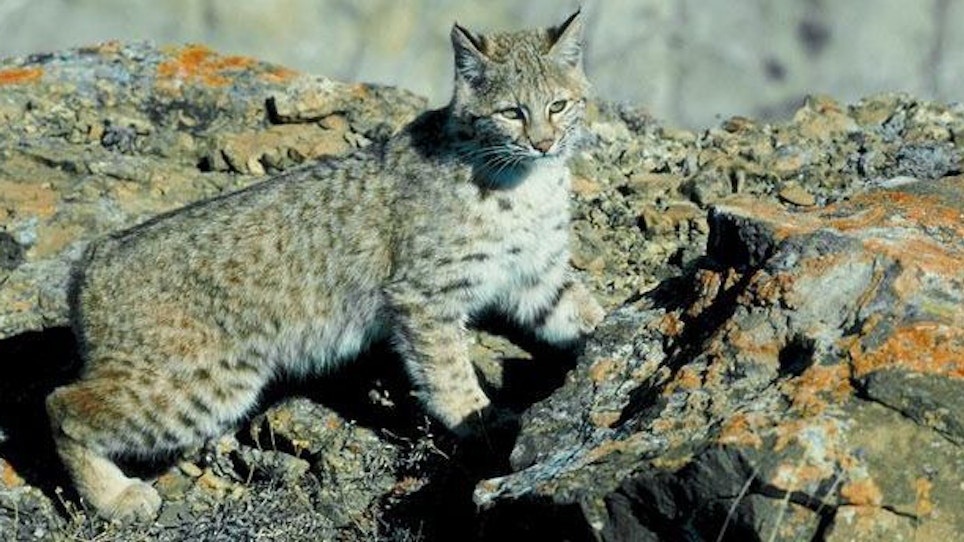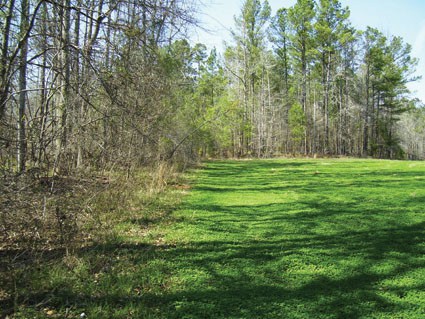Bobcats can be found almost anywhere but they prefer certain places such as brushy draws, creek bottoms and rocky outcroppings. In Southern rural areas, bobcats are known to seek old, abandoned buildings because they offer shelter and food in the form of rabbits, mice and snakes.
The felines prefer thick stuff that offers food and is conducive to their stalking habits. Bobcats will be drawn to clear-cut areas that provide thick cover and food. They will eat carrion if they must, but prefer to catch live food.
Bobcats have preferred, established travel routes and are prone to walk dry creek beds. These, along with the banks of water-carrying streams, are the places to look for tracks. The successful bobcat hunter does a lot of scouting, searching for tracks, scent posts and toilet areas. Just remember: There can be hundreds of acres of land that look promising but harbor no bobcats.
Calling Bobcats During the Day
I have read stories about predator hunters in Texas who call in and kill a dozen bobcats in a day with non-stop action under a burning sun. In the East, it isn’t going to happen. With a scant few exceptions, my daylight bobcats have been taken during the first two hours of morning light and the last two hours before dark.
 My wife, Nancy, has a mounted bobcat that was the exception. I was trying to call a fox for her, in the middle of a warm sunny day with a lot of wind — not prime conditions. Apparently her bobcat was really hungry because in less than five minutes it came running in and stopped 20 yards away.
My wife, Nancy, has a mounted bobcat that was the exception. I was trying to call a fox for her, in the middle of a warm sunny day with a lot of wind — not prime conditions. Apparently her bobcat was really hungry because in less than five minutes it came running in and stopped 20 yards away.
An Eastern bobcat usually begins hunting just before dark. It usually will hunt until its belly is full, or until the sun is up. Just like housecats, bobcats like to sleep a lot. The tom that has eaten well, unless he is roaming about looking for a girlfriend, will find a cozy spot and take a long nap. Your screaming rabbit calls might interrupt his sleep enough to cause him to open his eyes, but he isn't about to run you down.
A cat that has failed to catch dinner is another story. He might continue to hunt after the sun rises and this is the one you want to meet. If he doesn’t find breakfast, he will do one of two things – continue to hunt through the day, or bed down and ignore his hunger pangs until the late afternoon hours. The latter is more likely. It is this cat that will readily answer your call when you still have two hours of daylight left. Most cats slowly stalk the caller but one that is especially hungry will come at a faster pace, making himself more easily detected.
What Works, What Doesn't
The wise hunter will first look for bobcat sign. Fresh tracks and scat mean that a bobcat recently passed through the area. The cats, especially toms, have a specific travel route and practically step in their own footprints every time they make their hunting forays. The problem for hunters is that these feline hunting trips are long. The cat that made the tracks you found today will almost certainly come that way again, but it could be one day or five days from the time he laid his last tracks there.
A general rule-of-thumb for calling Eastern canines is to refrain from calling the same spots frequently because the critters can become call-shy. The opposite is true for bobcats. By consistently calling the same area, you increase your chances of his being in hearing distance when he passes through again.
Bobcats can't seem to reason like canines. The Eastern bobcat that has stalked a phony distress sound on more than one occasion, only to see a hunter sitting by a tree, has but one thought. He figures that he has such bad luck that every time he hears a prey in distress, there is a hunter there to keep him from having dinner. But I believe it is a rare bobcat that becomes call-shy. If he hears distress and he is hungry, he will come.
 The Perfect Setup
The Perfect Setup
As when calling any predator, attempt to set up with the sun at your back and with as much elevation as possible without being above the skyline. Height advantage is important because most bobcats approach very slowly and often with their bellies low to the ground.
Settle into a comfortable position because you might be there for a long time. Being absolutely still is also important. A bobcat has such excellent vision it can see a small bird's wing move at 200 yards. The successful hunter moves his head very little and his eyes a lot.
Don't sweat the wind direction too much. Though a bobcat has a good olfactory system, I find that bobcats will come straight to me from a downwind direction. As close as they come, I know full well they can scent me. They just don't seem to care.
Generally, my calling time for foxes and coyotes is 20 minutes. If I am specifically hunting bobcats, I call for a full hour. While I once called a bobcat in less than two minutes, most of my daytime cats show themselves at some point between 30 and 60 minutes. A couple of times, I stood up after an hour of calling only to bump a cat sitting motionless 30 yards away.
When calling canines, most predator callers, myself included, call for a few seconds, then follow with a couple of minutes of silence. Throw that rule away when calling cats. Bobcats are generally so slow in responding that they can lose interest during a two- or three-minute lull in calling. Canines seem to know instinctively that a rabbit can't scream nonstop for an hour. Cats don't possess that kind of intelligence. My most productive calling procedure for bobcats is to call continuously. With a mouth call, short rest periods are required, but don’t let them be too long.
Bobcats eat anything from mice to young deer — even an adult deer in rare instances. Even so, I don't call many cats with a deer distress call. Rabbit imitations have called many cats for me because, for 15 years that's all I tried. Over the last decade I learned that higher-pitched calls, those that mimic birds or smaller animals, work better for bobcats. Practically every electronic call maker has a woodpecker imitation and they work extremely well.







